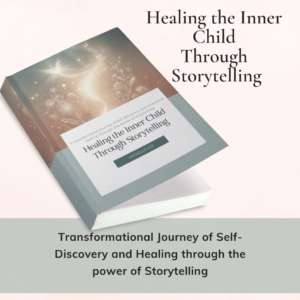
Fear can sneak up on us at the most inconvenient times—before a big meeting, during a conflict, or even lying in bed. But what if you could interrupt that fear spiral in under five minutes? Backed by science, this article offers simple, powerful tools to shift you from fear to calm—fast.
| Science | Research | Benefits |
|---|---|---|
| Mindfulness reduces activity in the brain’s default mode network (DMN), which is associated with self-referential thoughts and anxiety. | Studies confirm mindfulness-based stress reduction is as effective as traditional anxiety medications. | Reduces stress, anxiety, and depression by fostering emotional regulation and resilience. |
| Neuroscience shows that surrendering control rewires the brain through neuroplasticity, reinforcing pathways for adaptability and positivity. | Research highlights mindfulness tools like meditation and journaling as effective methods for observing thoughts without judgment. | Promotes cognitive flexibility, emotional balance, and a sense of freedom from habitual thought patterns. |
| Deep breathing exercises calm the amygdala, the brain’s fear center, and activate emotional control centers. | Techniques like focusing on breath or sensory awareness (e.g., noticing colors or sensations) are shown to shift focus away from fear. | Provides immediate relief from fear and fosters inner peace in under five minutes. |
🧠 The Science of Fear: Why We Feel It
Fear isn’t just “in your head.” It activates your amygdala, a part of the brain responsible for survival responses. When triggered, your body floods with cortisol and adrenaline—helpful in danger, but harmful when stuck in that state.
Chronic fear contributes to:
- Elevated cortisol levels
- High blood pressure
- Immune suppression
- Anxiety and panic attacks
(APA)
Luckily, science also tells us how to reverse this in minutes.
🕊️ 5 Research-Backed Techniques to Shift from Fear to Inner Peace Fast
1. Box Breathing (Deep Breathing)
Deep breathing calms your nervous system by activating the parasympathetic response (rest-and-digest). It also oxygenates your brain and reduces cortisol within minutes.
How to do it:
- Inhale for 4 seconds
- Hold for 4 seconds
- Exhale for 6 seconds
- Pause for 4 seconds
- Repeat for 3–5 minutes
✅ Proven benefits: Lowers heart rate, improves focus, reduces cortisol
📚 Study on breathing and stress relief (PMC)
2. Mindfulness Meditation
Mindfulness interrupts fear-based thinking by anchoring you to the present. It rewires your brain to respond rather than react.
Quick practice:
- Close your eyes
- Focus on the breath or bodily sensations
- If your mind wanders, gently return to the breath
✅ Proven benefits: Reduces amygdala activity, increases gray matter in emotion-regulating areas
📚 APA on mindfulness benefits
3. Progressive Muscle Relaxation (PMR)
Tension fuels fear. PMR calms your body by releasing stress stored in your muscles, sending your brain a “we’re safe” signal.
How to practice:
- Starting at your feet, tense each muscle group for 5 seconds, then relax
- Work your way up to your head
✅ Proven benefits: Used in clinical anxiety treatment
📚 Overview of PMR
✅ Tip: Combine PMR with breathing for extra relaxation.
4. Guided Imagery
Visualization redirects your brain from fear to peace. By imagining calming scenes, you activate parts of the brain involved in safety and pleasure.
How to use it:
- Picture a calming place—like the beach, forest, or a childhood memory
- Engage all five senses
- Stay immersed for 2–3 minutes
✅ Proven benefits: Shown to reduce anxiety in surgery patients and veterans
📚 More on relaxation psychology
🎧 Try This: Add a YouTube video of calming forest sounds or ocean waves to enhance the effect.
5. Self-Compassion Break
Fear often comes with self-criticism. Self-compassion activates the brain’s caregiving system (oxytocin release), helping reduce fear responses.
How to practice:
- Place your hand on your heart
- Acknowledge: “This is a moment of fear.”
- Say: “Others feel this too. I am not alone.”
- Finish with: “May I be kind to myself in this moment.”
✅ Proven benefits: Linked to lower anxiety, improved emotional resilience
📚 Self-compassion science
🙋♀️ Frequently Asked Questions (FAQs)
1. Can I really shift from fear to peace in 5 minutes?
Yes. While long-term habits help more deeply, these techniques trigger immediate biological responses that calm the mind quickly.
2. Do I need to meditate for years to get benefits?
No. Even 1–2 minutes of mindful breathing has measurable calming effects.
3. What if I can’t visualize during guided imagery?
Try using audio guides. Your brain still responds even if you “feel” the scene rather than see it.
4. Is this a substitute for therapy?
These tools are great for daily stress management, but if you have persistent anxiety, it’s important to seek support from a therapist or counselor.
5. Can I use these at work or in public?
Absolutely. Techniques like box breathing or silent self-compassion can be done discreetly anytime, anywhere.
🎯 Final Thoughts + Call to Action
Fear is a natural emotion, but it doesn’t have to run your life. These quick, science-backed tools can help you shift into peace within minutes—whether you’re at home, in your car, or at your desk.
💡 Try this challenge:
Pick one technique and use it the next time fear arises. Journal how you feel afterward. Over time, you’ll train your brain toward calm.


Leave a Reply